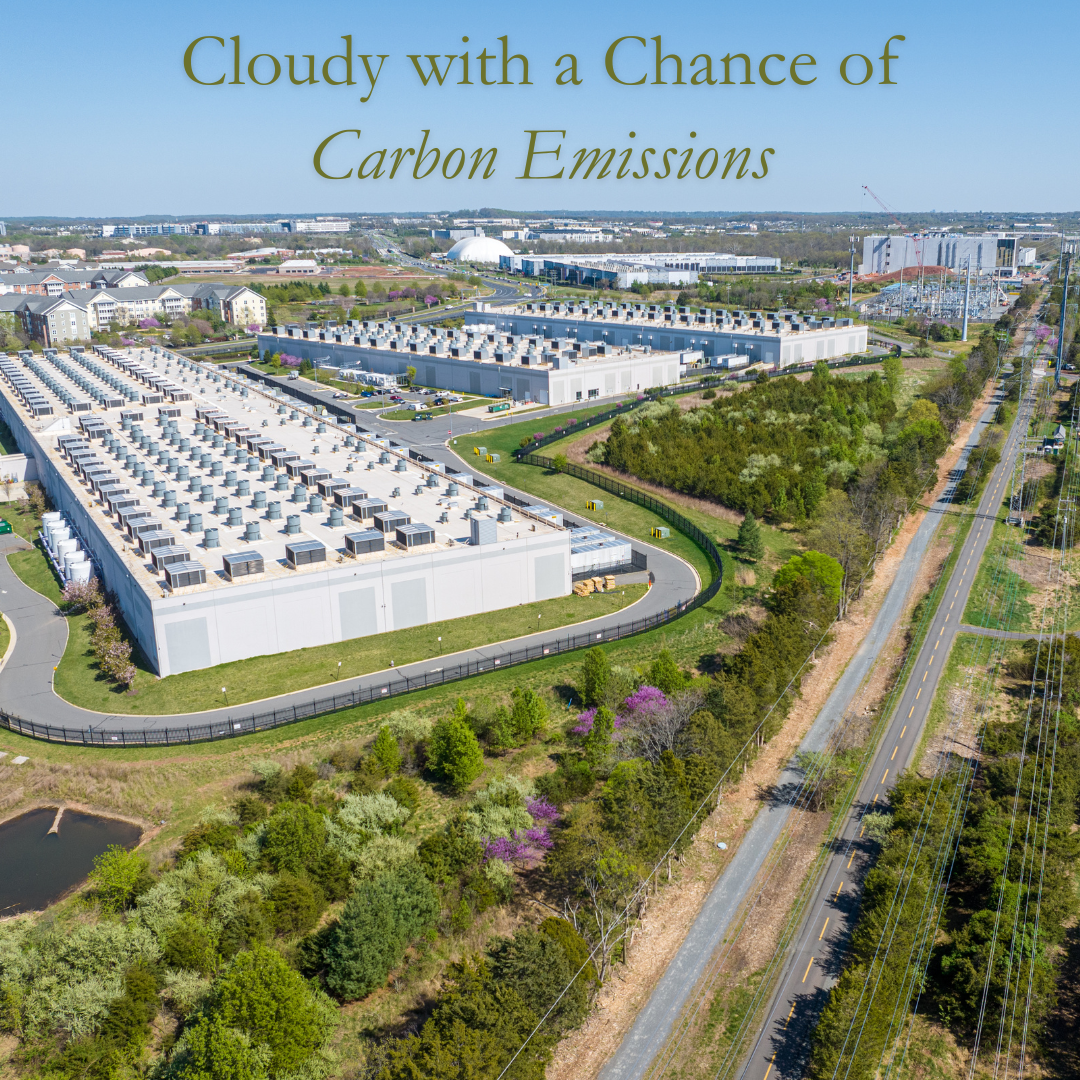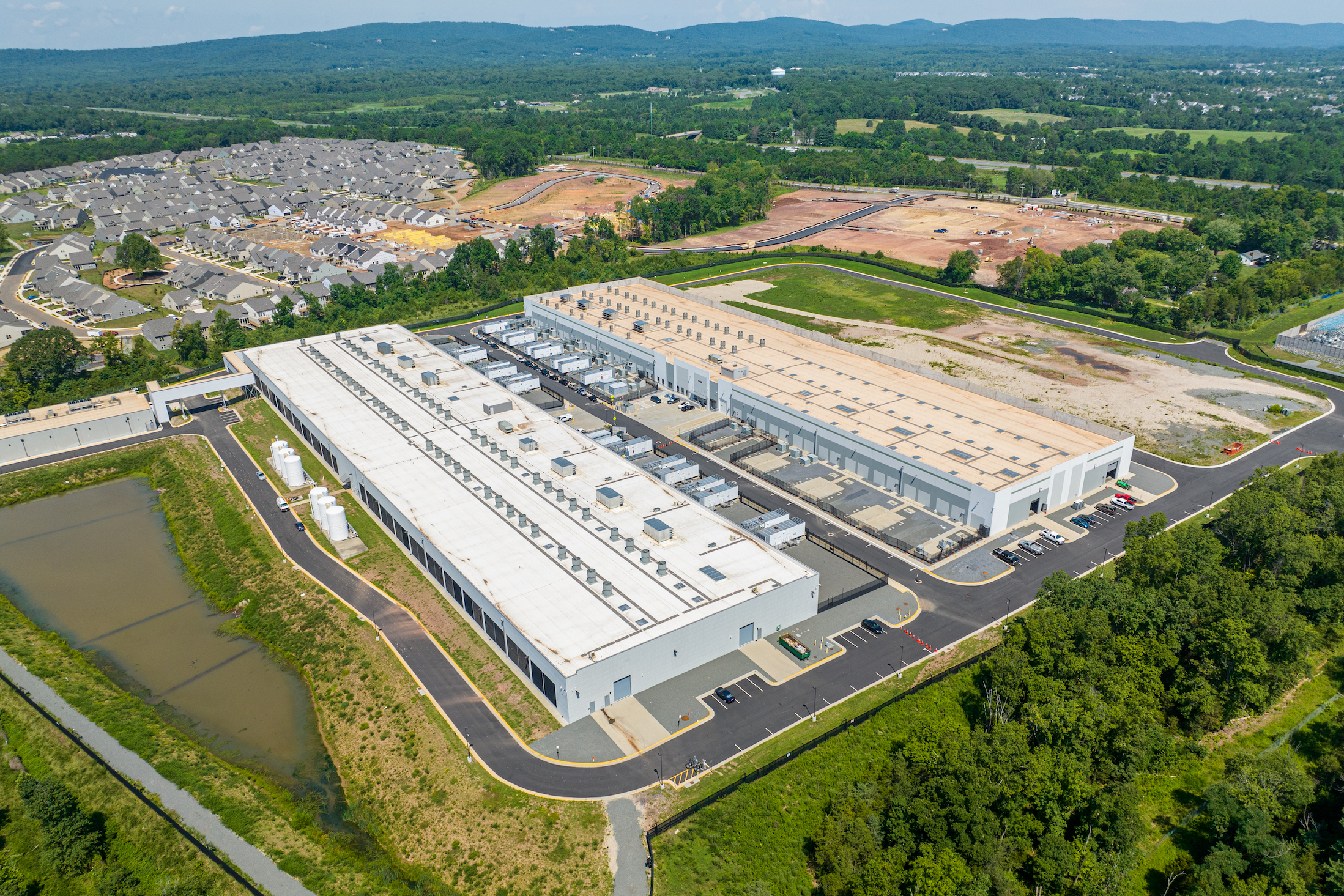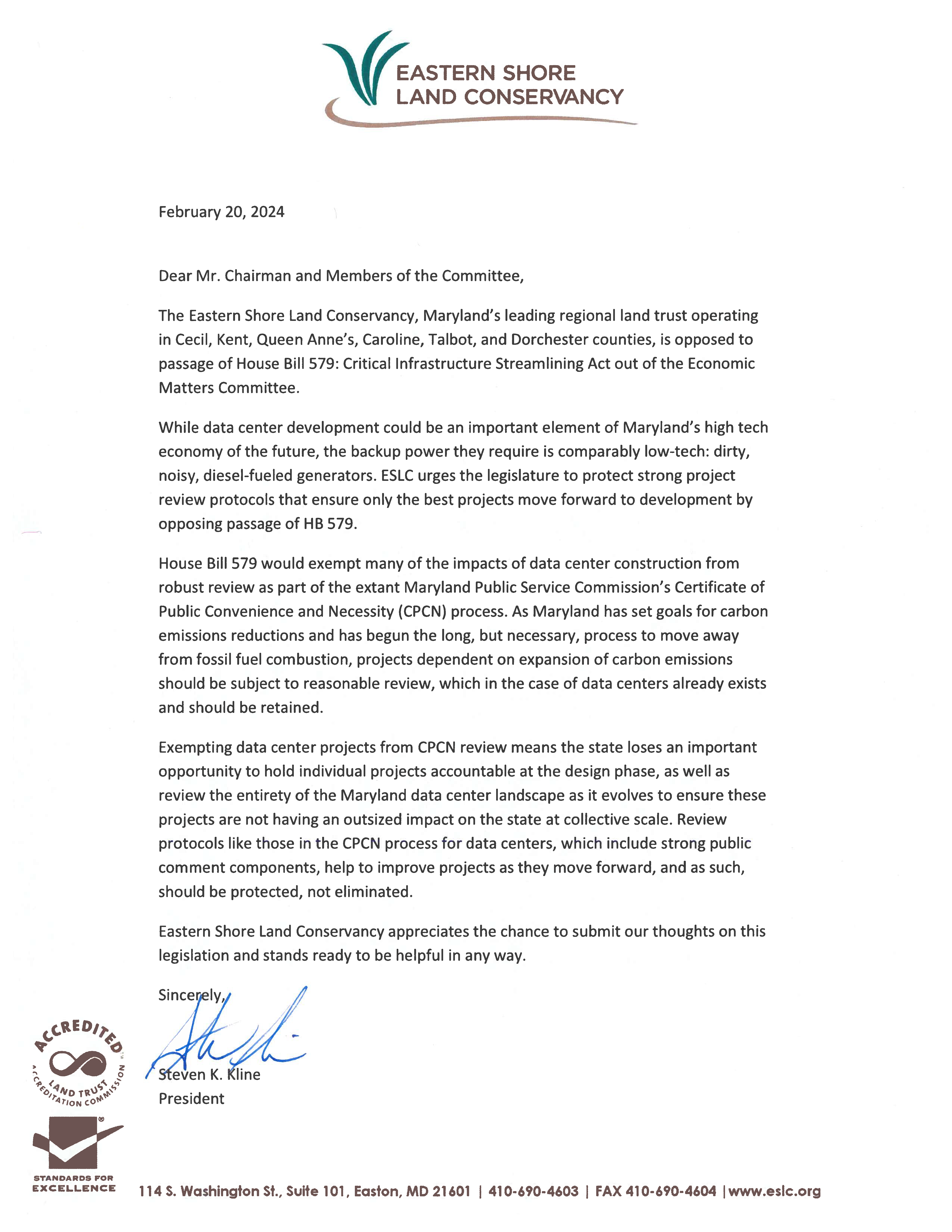Cloudy with a Chance of Carbon Emissions

Photo of data centers in Northern Virginia by Hugh Kenny, The Piedmont Environmental Council
We are living in a cloud. Our personal and professional lives are intertwined with cloud-based services which we use to store data, stream content, and manage our smart home devices. But is the e-book on your tablet or the audiobook on your phone actually more environmentally responsible than the paperback version on your bookshelf? The cloud may sound lightweight and ethereal, but each photo, book, website, and recording is grounded, literally, in massive data centers which have very real impacts on communities and the environment. While the cloud holds more than entertainment—storing critical information and delivering essential services in our modern world—there still have to be policies in place that address the environmental impacts of where our data is stored.
Ignoring the need for regulation would be as reckless as plunging forward with asbestos mining and manufacture had we known it would result in thousands of lives lost to asbestosis and mesothelioma. We are already aware of the risks and costs of data center development. We know they require acres and acres of the precious little land we have left open. We know that the thousands of servers housed in data centers require massive amounts of fresh water as liquid coolant, and this at a pivotal time of increasing water scarcity. Resources are limited. Now is the time to be transparent and proactive.
Data center development in Maryland is a priority of the Moore administration which is seeking legislation to accelerate projects by exempting them from a review process. Without that review process, environmental impacts will not be considered during permitting. This proposal has been met with sharp criticism from normal allies within the environmental community, including Eastern Shore Land Conservancy.
ESLC opposed the Moore Administration’s bill (formal letters below) and testified before the Senate Education, Environment and Energy committee in support of an alternative bill which would require high-energy use facilities such as data centers to set targets for reducing greenhouse gas emissions emitted from their facilities.
To gain perspective, Maryland need only look to neighboring Virginia, which has the largest concentration of data centers in the world and hosts the majority of global internet traffic. Data center development there threatens the regional power supply, land conservation goals, and water and air quality.

Data center development encroaches on neighborhoods, farmland, and wildlife habitat in northern Virginia. Photo by Hugh Kenny, The Piedmont Environmental Council.
As the industry moves towards larger co-location of projects, the amount of electricity required is projected to more than double Virginia’s peak electricity demand by 2038. This demand has major implications for costly transmission infrastructure and could delay the transition to renewable forms of power.
Nationwide, data centers are projected to consume 6% of the total electricity in the country leading a recent Washington Post article to proclaim, “amid explosive demand, America is running out of power.” And since these facilities require uninterrupted power, back-up power generation – usually in the form of banks of diesel generators – are an integral part of their design, further adding to their environmental footprint. As it stands now, the Cloud already has a greater carbon footprint than the airline industry.
Other impacts are similarly outsized. A single proposed project in Virginia has a footprint equivalent to 150 Walmart Supercenters and the Quantum Loophole project proposed in Frederick County here in Maryland projected to use 5 million gallons of water a day, equivalent to 80% of the City of Frederick’s daily usage.
Despite all this, it is all but impossible to imagine a world in which the services provided by these data centers does not continue to accelerate which makes it all the more important to fully account for their wide-spread impacts. Proponents of data centers point to their vital role in the digital economy and their ability to create jobs and economic growth in the regions where they are located as well as tax revenue for local governments. But given the large tracts of land they require (usually agricultural lands) and the massive amounts of energy and water they consume, the impacts of data centers cannot not be ignored if we are serious about achieving our climate goals. Potential solutions advocated by many environmental groups such as off-setting data center impacts by requiring renewable energy, such as utility scale solar development as a design component, could further exacerbate the pressure on agricultural lands and fundamentally change rural landscapes, a tide already encroaching upon the Eastern Shore.
Maryland must adopt a holistic and systemic approach to data center development. Environmental, social, and economic considerations are needed for a successful paradigm shift towards sustainability. This transformation requires political will, stakeholder engagement, policy reforms, and a shift in societal values towards valuing long-term sustainability over short-term gains.








